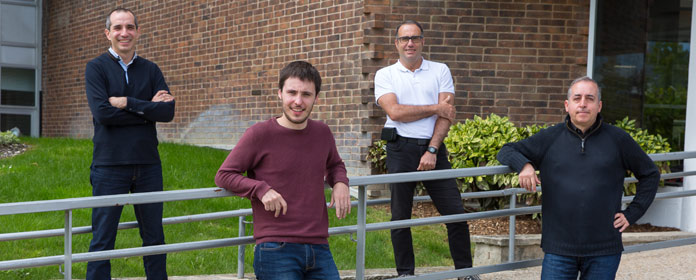An experiment at the University of Navarra will make it possible to study the movement of people in closed enclosures under social distancing
This research aims to determine the number of people who can safely stay in enclosed places such as bars, theaters and cinemas.

PHOTO: Manuel Castells
How many people can remain in a bar, cinema or theater maintaining the recommended social distance to avoid COVID-19 infection? This question will be answered by a group of researchers from the University of Navarra who, through an experiment with people, intend to study how the movement of people changes when a social distance is imposed.
The experiment -which will bring together some thirty participants- will take place on Tuesday, June 23 at 6:30 p.m. on floor 0 of the Friends of the University of Navarra Building. The activity will consist of a variable number of people walking freely in a quadrilateral of 10x10 square meters trying to maintain a safety distance of two meters. "During this dynamic there will be 24 different rounds - each lasting three minutes - to evaluate different variables such as the number of people inside the ring, the recommended safety distance, and the speed of the participants," says Iñaki Echeverría, one of the organizers of the test.
The experiment is part of the doctoral thesis of Iñaki Echeverría, a doctoral student in the Department of Physics at the University of Navarra, and is supervised by Iker Zuriguel, professor in the Faculty of Science at the University of Navarra, and César Martin, professor in the School of Architecture at the same institution. "These types of experiments are a novelty in our field. We are used to investigating topics related to risk situations such as building evacuations, fires, etc. However, the situation presented to us with this health crisis reveals new problems that have not been investigated until now and whose analysis from a scientific point of view is necessary," says the young researcher.
The organizers of the experiment have provided for safety during the test: from the staggered access to the building, the maintenance of the safety distance between volunteers, the mandatory use of protective masks and the use of hydroalcoholic gel, among other measures.
Although there are some health recommendations on the density of people in enclosed areas, at the moment there is no scientific evidence to ensure which values are safe to respect at all times the rules of social distancing.